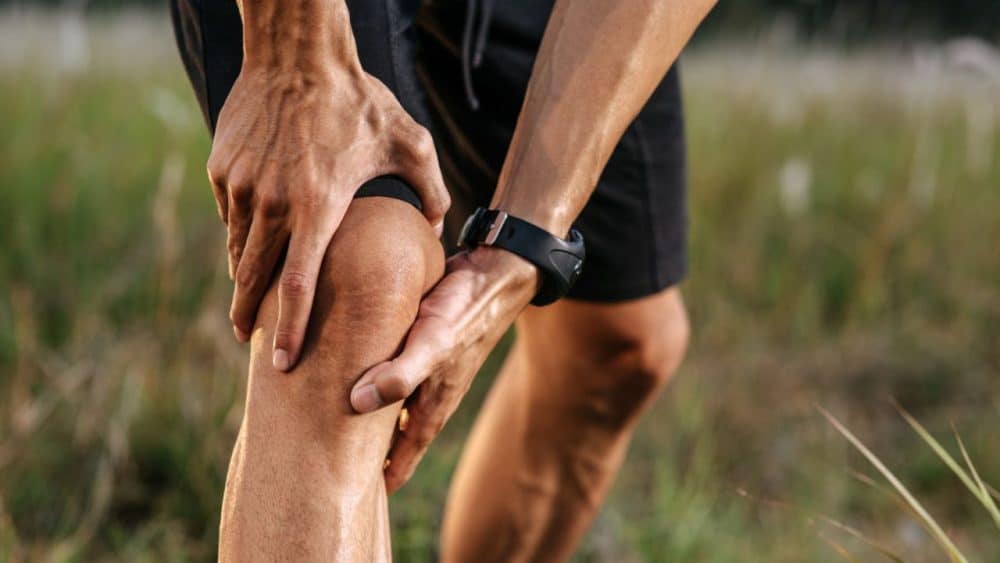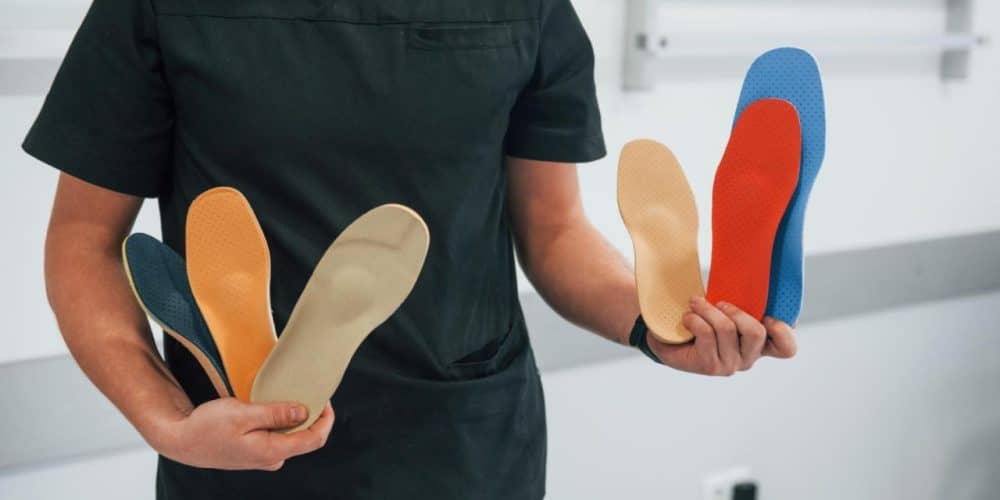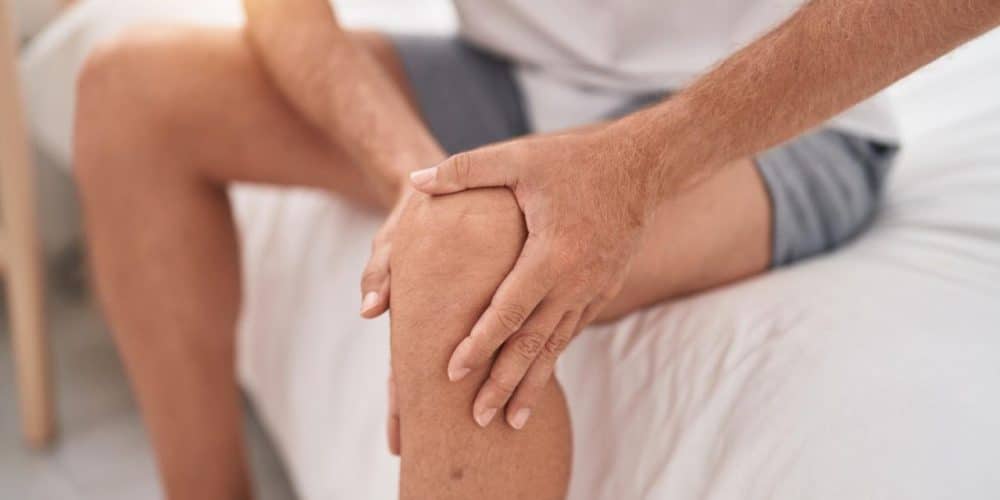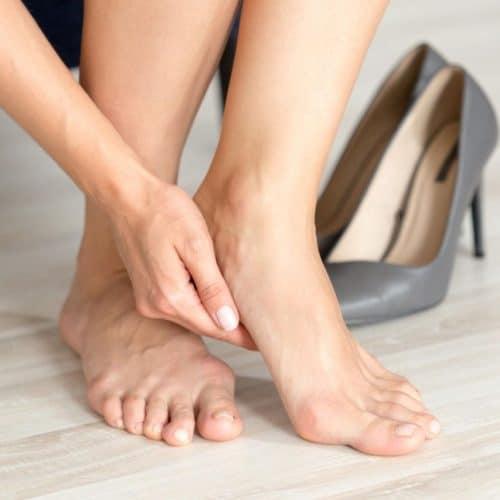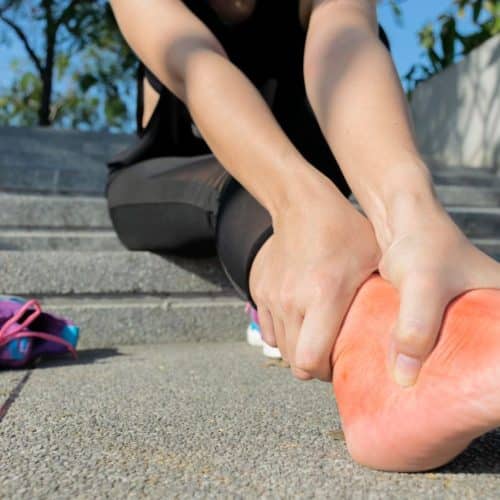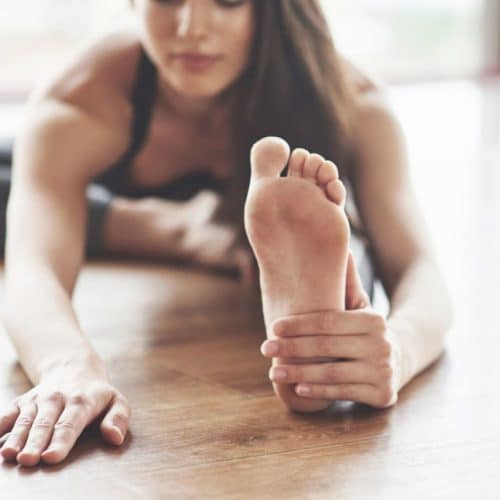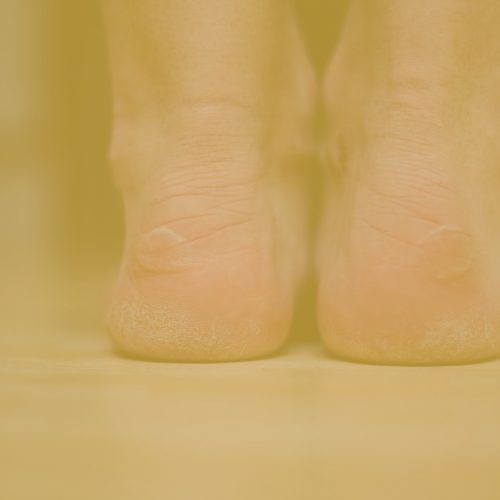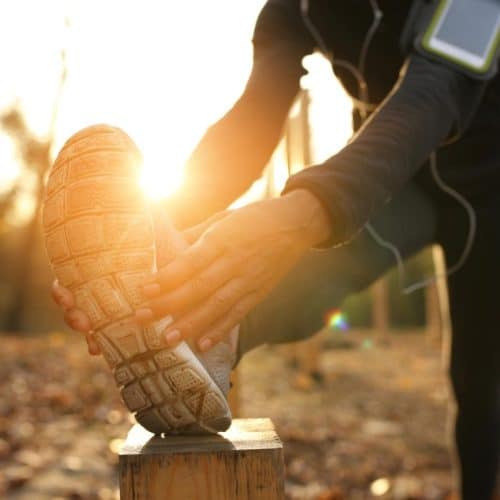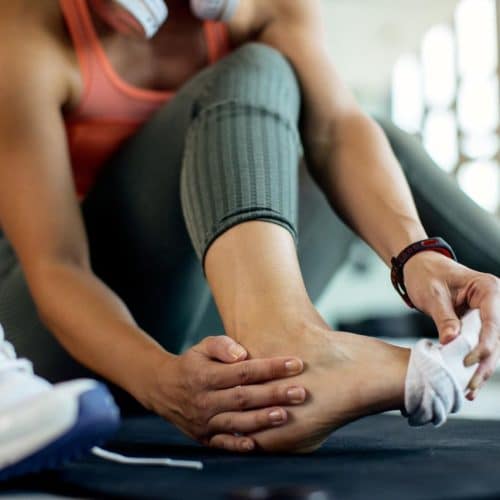Are you someone who experiences knee pain after an intense workout session? You’re not alone! Many fitness enthusiasts often grapple with post-workout knee discomfort, wondering what might be causing it. While exercise is essential for overall health, knee pain can be a frustrating setback that hinders your progress.
Understanding Knee Pain After Working Out
Knee pain after working out is a common complaint among individuals who lead an active lifestyle. Whether you’re an avid athlete, a fitness enthusiast, or simply someone who enjoys regular exercise, experiencing knee discomfort can be frustrating and concerning. Understanding the underlying causes of knee pain after workouts is crucial for effective prevention and management.
1. The Complexity of the Knee Joint
The knee joint is a complex structure that is a vital link between the upper and lower leg. It comprises several components: bones, ligaments, tendons, cartilage, and synovial fluid. The femur (thigh bone), tibia (shin bone), and patella (kneecap) come together to form the knee joint with the help of various supporting structures.
2. The Role of Ligaments
The knee joint is held in place by strong bands of connective tissue called ligaments, which also limit the amount of movement that may occur there. The anterior cruciate ligament (also known as the ACL), the posterior cruciate ligament (also known as the PCL), the medial collateral ligament (often known as the MCL), and the lateral collateral ligament (sometimes known as the LCL) are the four primary ligaments in the knee. During actions such as walking, running, jumping, and rotating, these ligaments operate in conjunction with one another to give stability.
3. The Importance of Cartilage
Cartilage is a smooth, rubbery substance that covers the ends of the bones in the knee joint. It acts as a cushion and allows for smooth movement without friction. The two types of cartilage in the knee are articular cartilage (covering the bones’ ends) and meniscus cartilage (C-shaped discs that act as shock absorbers between the femur and tibia).
4. The Role of Muscles
The muscles surrounding the knee joint play a crucial role in supporting and protecting it during physical activity. The quadriceps on the front of the thigh help extend the knee, while the hamstrings at the back of the thigh aid in bending the knee. Strong and balanced muscles are essential for maintaining knee stability and preventing injuries.
5. The Impact of Exercise on the Knee
Regular exercise is essential for maintaining overall health and fitness, but certain physical activities can stress the knee joint significantly. High-impact exercises, such as running, jumping, and intense aerobic workouts, can lead to repetitive forces on the knee, potentially causing micro-injuries and inflammation over time.
6. Inflammation and Overuse
When you engage in strenuous physical activities, the muscles and ligaments around the knee can become inflamed due to microscopic tears in the tissue. While this is a normal part of the body’s repair process, overuse or inadequate recovery time can lead to chronic inflammation and persistent knee pain.
7. Gradual Onset of Pain
Knee pain after working out might not always be immediate. The discomfort may sometimes start as a mild ache or stiffness and gradually worsen over time. This delayed onset of pain can make it challenging to identify the exact cause.
8. Identifying Underlying Issues
It’s essential to recognise that knee pain after working out could be a symptom of an underlying issue. Conditions such as tendinitis, bursitis, osteoarthritis, or a meniscus tear can manifest as knee pain after exercise. Proper evaluation by a healthcare practitioner is crucial to determine the accurate diagnosis and appropriate treatment.
9. The Importance of Rest and Recovery
Ignoring knee pain and continuing to exercise without proper rest can lead to more severe injuries. It’s essential to listen to your body and allow ample time for rest and recovery after intense workouts. Incorporating rest days into your exercise routine and alternating between high-impact and low-impact activities can help reduce the risk of overuse injuries.
Common Causes of Knee Pain After Exercise
Experiencing knee pain after exercise is a prevalent issue that can hinder your fitness progress and overall well-being. Understanding the common causes behind this discomfort is essential for effectively addressing and preventing knee pain. Here are some of the primary reasons why your knees may ache after working out:
1. Overuse Injuries
Overuse injuries occur when you subject your knee joint to repetitive stress without allowing sufficient time for recovery. Engaging in high-impact activities, such as running, jumping, or intense weightlifting, without proper rest can lead to inflammation and strain on the knee structures. Over time, this can result in conditions like patellofemoral pain syndrome (runner’s knee) or IT band syndrome.
2. Muscle Imbalances
Muscle imbalances refer to an inequality in strength and flexibility between the muscles surrounding the knee joint. When certain muscles are stronger than others, it can lead to improper alignment and increased pressure on specific knee areas. Weakness in the quadriceps or tightness in the hamstrings can contribute to knee pain during and after exercise.
3. Poor Form or Technique
Using incorrect form or technique during exercises places unnecessary stress on the knee joint. Whether it’s improper squatting, lunging, or running mechanics, these movements can overload specific parts of the knee, causing discomfort and potential injuries.
4. Incorrect Footwear
Wearing inappropriate footwear during exercise can negatively impact your knees. Shoes with inadequate cushioning or lack of support fail to absorb shock effectively, leading to increased pressure on the knee joint. Investing in high-quality athletic shoes that suit your workout activities and foot type is essential.
5. Excessive Impact
Participating in high-impact exercises, especially on hard surfaces like concrete or asphalt, can contribute to knee pain. Activities like jumping, plyometrics, and vigorous aerobic exercises can generate significant force on the knee joint, leading to wear and tear on the joint structures.
6. Sudden Increase in Intensity
Rapidly escalating the intensity or duration of your workouts can overwhelm your knee joint, especially if your body is not adequately conditioned for such stress. Gradual progression and allowing your knees time to adapt to new challenges can help prevent exercise-induced knee pain.
7. Pre-existing Conditions
Certain pre-existing conditions, such as arthritis, tendinitis, or meniscus tears, can aggravate during exercise, leading to knee pain. Individuals with these conditions should take extra precautions and consult a healthcare practitioner to design exercise programs.
8. Lack of Warm-up and Cool Down
Skipping warm-up exercises before starting your workout or neglecting to cool down afterwards can increase the risk of knee pain. Warm-up activities prepare your muscles and joints for the upcoming exercise, while cooling down helps promote blood flow and recovery.
9. Insufficient Flexibility
Lack of flexibility, especially in the muscles around the knee, can affect the joint’s range of motion and lead to knee discomfort during exercise. Incorporating stretching exercises into your routine can help improve flexibility and reduce the risk of knee pain.
10. Age and Wear and Tear
As we age, our joints naturally undergo wear and tear. This can make the knee joint more susceptible to injuries during physical activity, especially if adequate care and preventive measures are not taken.
Understanding these common causes of knee pain after exercise empowers you to take proactive steps in safeguarding your knee health. By implementing proper warm-up routines, focusing on form and technique, wearing suitable footwear, and incorporating adequate rest and recovery, you can minimise the risk of knee pain and enjoy a more rewarding and pain-free workout experience.
If knee pain persists or worsens, don’t hesitate to consult with a healthcare practitioner for a comprehensive evaluation and personalised treatment plan.
Precautions and Tips to Prevent Knee Pain
Preventing knee pain is essential for maintaining an active lifestyle and enjoying pain-free workouts. By taking appropriate precautions and following these helpful tips, you can reduce the risk of knee injuries and discomfort during and after exercise:
1. Warm-up and Cool Down
Before diving into your workout, start with a dynamic warm-up to get your blood flowing and your muscles ready for activity. Warm-up exercises should include movements that mimic the exercises you’ll be doing during your workout. After your workout, cool down with static stretches to promote flexibility and help your muscles recover.
2. Strengthening Exercises
Incorporate strength training exercises that target the muscles around your knee joint. Focus on exercises that work the quadriceps, hamstrings, and calf muscles. Strengthening these muscle groups provides better support and stability for your knees during workouts.
3. Proper Technique
Maintaining proper form and technique during exercises is crucial for protecting your knees from unnecessary stress. If you’re unsure about the correct execution of a particular exercise, consider working with a fitness trainer who can guide you and ensure you perform movements safely.
4. Appropriate Footwear
Invest in high-quality athletic shoes with adequate cushioning and support for your workout activities. Shoes with proper arch support and shock absorption can significantly reduce the impact on your knees during high-impact exercises.
5. Listen to Your Body
Pay attention to any signs of discomfort or pain during exercise. If you experience knee pain, stop the activity immediately and allow your knees to rest and recover. Pushing through pain can worsen injuries and lead to more prolonged recovery times.
6. Low-Impact Alternatives
Incorporate low-impact exercises into your routine to give your knees a break from high-impact activities. Swimming, cycling, and using an elliptical machine are excellent alternatives that provide effective workouts with reduced stress on the knee joint.
7. Avoid Overtraining
Overtraining can lead to overuse injuries, including knee pain. Give your body sufficient time to rest and recover between workouts. Incorporate rest days into your routine, and avoid intense exercises on consecutive days.
8. Maintain a Healthy Weight
Excess body weight can put additional strain on your knee joints. Maintaining a healthy weight through a balanced diet and regular exercise can reduce the pressure on your knees and lower the risk of knee pain.
9. Stretch Regularly
Flexibility is crucial for joint health. Incorporate regular stretching exercises into your routine, focusing on the muscles around your hips, thighs, and calves, as tightness in these areas can affect knee alignment.
10. Gradual Progression
When starting a new exercise program or increasing the intensity of your workouts, do so gradually. Rapidly escalating the intensity can overwhelm your knee joint, increasing the risk of injury.
When to Seek Medical Attention
While mild soreness and discomfort after exercise are normal, persistent or severe knee pain should not be ignored. Recognising when to seek medical attention is crucial for identifying and addressing any underlying issues with your knee health. Here are some indicators that warrant a visit to a healthcare practitioner:
1. Intense and Prolonged Pain
Consulting with a healthcare practitioner is essential if you experience intense and prolonged knee pain that persists even after resting for a few days. This pain could indicate a more severe injury or condition requiring professional evaluation and treatment.
2. Swelling and Inflammation
Noticeable swelling and inflammation around the knee joint, especially following exercise, could indicate an injury or inflammation of the structures within the knee. Swelling accompanied by pain or limited mobility requires medical attention.
3. Difficulty Bearing Weight
If you find it challenging to put weight on your affected knee or experience instability while standing or walking, it’s a red flag for a potential knee problem. Seeking medical attention can help determine the cause and prevent further complications.
4. Clicking or Popping Sensation
Unusual sensations, such as clicking, popping, or catching in the knee joint during movement, may indicate issues with the joint’s stability or cartilage. A healthcare practitioner should evaluate these symptoms to avoid exacerbating the problem.
5. Limited Range of Motion
Suppose you notice a significant decrease in your knee’s range of motion or have difficulty bending or straightening your leg. In that case, it may signal an injury that requires medical assessment and appropriate treatment.
6. Previous Knee Injuries or Surgeries
Even minor new symptoms should be taken seriously if you have a history of knee injuries or surgeries. Scar tissue, adhesions, or residual weaknesses from past injuries can make the knee more susceptible to further problems.
7. Locking of the Knee
Experiencing a sensation that your knee is “locking” or getting stuck during movement can indicate potential knee joint or meniscus issues. Seeking medical attention can help prevent further complications and address the problem promptly.
8. Fever or Infection
If you experience knee pain accompanied by fever, warmth, redness, or any signs of infection, it may indicate a more serious condition requiring immediate medical evaluation.
Remember that seeking timely medical attention for knee pain is essential for proper diagnosis and treatment. A healthcare practitioner, such as an orthopedic specialist or a sports medicine physician, can perform a thorough examination, order diagnostic tests if necessary, and recommend a suitable course of action to address the root cause of the knee pain. Early intervention can lead to better outcomes and a faster return to pain-free physical activities.
Rehabilitation and Recovery
Rehabilitation and recovery are crucial in managing knee pain and injuries after working out. Whether dealing with a minor strain or recovering from a more severe knee issue, following a comprehensive rehabilitation plan is essential for a successful recovery. Here are some key components of knee rehabilitation and recovery:
- Rest: Give your knee ample rest to allow the injured tissues to heal. Avoid high-impact activities and exercises that exacerbate the pain.
- Ice: Apply ice to the affected knee for 15-20 minutes every few hours during the initial 48 hours after the injury. Ice helps reduce inflammation and provides pain relief.
- Compression: Use a compression bandage or knee brace to support the injured area and reduce swelling. Ensure the compression is not too tight to avoid compromising blood circulation.
- Elevation: Elevate your leg above the level of your heart whenever possible. This helps reduce swelling and promotes better circulation to the injured area.
- Pain Management: Over-the-counter pain relievers, such as acetaminophen or ibuprofen, can help manage pain and inflammation. However, consult with a healthcare practitioner before using any medication.
- Physical Therapy: A physical therapist can design a tailored exercise program to strengthen the muscles around your knee, improve flexibility, and enhance stability. Physical therapy is essential for restoring full functionality to the knee joint.
- Range of Motion Exercises: Gentle range of motion exercises help maintain flexibility and prevent stiffness in the knee joint.
- Gradual Return to Exercise: Once your knee has healed and you’ve received clearance from your healthcare practitioner, gradually reintroduce low-impact exercises into your routine. Listen to your body and avoid pushing yourself too hard too soon.
- Avoid Aggravating Activities: Identify activities that may have contributed to your knee pain and avoid or modify them to prevent the recurrence of the injury.
- Proper Body Mechanics: Learn and practice proper body mechanics to minimise knee stress during exercise and daily activities.
- Supportive Devices: If necessary, consider using supportive devices like orthotics or knee braces to provide additional stability and protection during exercise.
- Follow Professional Advice: Adhere to the advice and instructions provided by your healthcare practitioner and physical therapist diligently. This includes attending scheduled appointments and following the prescribed exercise program.
- Maintain a Healthy Lifestyle: Eat a balanced diet, stay hydrated, and maintain a healthy weight to support overall joint health.
Remember that rehabilitation and recovery timelines can vary based on the severity of the injury and individual factors. Be patient and give your knee the time it needs to heal properly. Rushing the recovery process may lead to reinjury or complications.
If you experience any setbacks or new symptoms during rehabilitation, consult with your healthcare practitioner for further evaluation and adjustments to your treatment plan. With dedication and proper care, you can overcome knee pain and return to an active and fulfilling lifestyle.
Alternative Workouts for Knee-Friendly Exercise
Suppose you experience knee pain or have a history of knee issues. In that case, finding alternative workouts that are gentle on your knees is essential while still providing an effective and enjoyable fitness experience. Fortunately, numerous low-impact exercises can help you stay active and maintain your fitness level without putting excessive stress on your knee joints. Here are some knee-friendly exercise options to consider:
1. Swimming
Swimming is an excellent low-impact workout that engages multiple muscle groups without putting pressure on your knees. The buoyancy of water reduces the impact on your joints, making it an ideal option for individuals with knee pain or arthritis. Whether you prefer freestyle, backstroke, or water aerobics, swimming can provide a full-body workout while protecting your knees.
2. Cycling
Cycling on a stationary bike or a road bike is a fantastic way to get your heart rate up without stressing your knee joints. It’s a low-impact exercise that helps strengthen your leg muscles while offering an enjoyable cardiovascular workout. Just be sure to properly adjust the bike’s seat height to minimise knee strain.
3. Elliptical Training
Using an elliptical machine is an excellent alternative to running or jogging. The elliptical’s smooth gliding motion reduces the impact on your knees while engaging your lower body muscles. Many elliptical machines also come with handlebars, providing an upper-body workout.
4. Rowing
Rowing is a low-impact, full-body exercise that can be done on a rowing machine or in a boat on the water. It works your legs, core, arms, and back muscles, offering an excellent cardiovascular workout without putting pressure on your knees.
5. Yoga
Yoga is a gentle yet effective exercise focusing on flexibility, balance, and strength. Many yoga poses can be modified to suit your needs and limitations, making it a knee-friendly workout option. Yoga also promotes relaxation and stress relief, benefiting your physical and mental well-being.
6. Pilates
Pilates is a low-impact exercise emphasising core strength, flexibility, and controlled movements. It improves posture, balance, and overall body awareness without straining your knees.
7. Tai Chi
Tai Chi is a gentle, low-impact exercise that combines slow, flowing movements with deep breathing and mindfulness. It improves balance, coordination, and joint flexibility, making it suitable for individuals with knee issues.
8. Resistance Training
Resistance training with light weights or resistance bands can help strengthen the muscles around your knees and improve overall joint stability. Focus on exercises that target your quads, hamstrings, and glutes to provide additional support for your knees.
9. Water Aerobics
Water aerobics classes in shallow water provide a low-impact, high-resistance workout. The water’s buoyancy supports your body, reducing the stress on your joints while allowing for a full-body workout.
10. Bodyweight Exercises
Performing bodyweight exercises such as squats, lunges, and modified push-ups can help build strength without heavy weights. These exercises can be adapted to your fitness level and are less taxing on your knees than high-impact movements.
Remember to listen to your body and choose comfortable and enjoyable exercises. Suppose you have specific concerns about your knees or any other health conditions. In that case, it’s always a good idea to consult a healthcare practitioner or a fitness trainer before starting a new exercise regimen. By incorporating knee-friendly workouts into your routine, you can maintain your fitness goals while safeguarding your knee health for the long term.
Conclusion
In conclusion, knee pain after working out can be a common and frustrating issue for many fitness enthusiasts. Understanding the root causes of this discomfort is essential to prevent further injury and maintain an active lifestyle. We have explored several factors that can contribute to knee pain after exercise, and by being mindful of these, you can take proactive steps to minimise the risk of experiencing such discomfort.
Remember, while occasional soreness after exercise is normal, persistent or severe knee pain should not be ignored. If you experience chronic discomfort, it’s vital to consult a healthcare practitioner to get a proper diagnosis and appropriate treatment.
What are your go-to strategies for preventing knee pain?
We’d love to hear from you! Share your favourite strategies for preventing knee pain after working out. Let the community know whether it’s a specific warm-up routine, strength training exercises, or any other technique you find effective! Your insights could help fellow fitness enthusiasts stay active and pain-free.
So, drop your tips in the comments section below and let’s support each other on our fitness journeys. Happy exercising!
Content Summary
- In short, knee pain after working out can be attributed to several factors, including improper form during exercises, overuse of the knee joint, weak muscles supporting the knees, or even underlying injuries that get aggravated during physical activity.
- Understanding the underlying causes of knee pain after workouts is crucial for effective prevention and management.
- Strong and balanced muscles are essential for maintaining knee stability and preventing injuries.
- When you engage in strenuous physical activities, the muscles and ligaments around the knee can become inflamed due to microscopic tears in the tissue.
- While this is a normal part of the body’s repair process, overuse or inadequate recovery time can lead to chronic inflammation and persistent knee pain.
- It’s essential to recognise that knee pain after working out could be a symptom of an underlying issue.
- It’s essential to listen to your body and allow ample time for rest and recovery after intense workouts.
- Experiencing knee pain after exercise is a prevalent issue that can hinder your fitness progress and overall well-being.
- Understanding the common causes behind this discomfort is essential for effectively addressing and preventing knee pain.
- Participating in high-impact exercises, especially on hard surfaces like concrete or asphalt, can contribute to knee pain.
- Incorporating stretching exercises into your routine can help improve flexibility and reduce the risk of knee pain.
- Understanding these common causes of knee pain after exercise empowers you to take proactive steps in safeguarding your knee health.
- Before diving into your workout, start with a dynamic warm-up to get your blood flowing and your muscles ready for activity.
- Incorporate low-impact exercises into your routine to give your knees a break from high-impact activities.
- Give your body sufficient time to rest and recover between workouts.
- While mild soreness and discomfort after exercise are normal, persistent or severe knee pain should not be ignored.
- Recognising when to seek medical attention is crucial for identifying and addressing any underlying issues with your knee health.
- Consulting with a healthcare practitioner is essential if you experience intense and prolonged knee pain that persists even after resting for a few days.
- Swelling accompanied by pain or limited mobility requires medical attention.
- Seeking medical attention can help determine the cause and prevent further complications.
- Even minor new symptoms should be taken seriously if you have a history of knee injuries or surgeries.
- Remember that seeking timely medical attention for knee pain is essential for proper diagnosis and treatment.
- Rehabilitation and recovery are crucial in managing knee pain and injuries after working out.
- Give your knee ample rest to allow the injured tissues to heal.
- Avoid high-impact activities and exercises that exacerbate the pain.
- Physical therapy is essential for restoring full functionality to the knee joint.
- Adhere to the advice and instructions provided by your healthcare practitioner and physical therapist diligently.
- Suppose you experience knee pain or have a history of knee issues.
- Tai Chi is a gentle, low-impact exercise that combines slow, flowing movements with deep breathing and mindfulness.
- Water aerobics classes in shallow water provide a low-impact, high-resistance workout.
- Remember to listen to your body and choose comfortable and enjoyable exercises.
- Suppose you have specific concerns about your knees or any other health conditions.
- In that case, it’s always a good idea to consult a healthcare practitioner or a fitness trainer before starting a new exercise regimen.
- By incorporating knee-friendly workouts into your routine, you can maintain your fitness goals while safeguarding your knee health for the long term.
- In conclusion, knee pain after working out can be a common and frustrating issue for many fitness enthusiasts.
- Understanding the root causes of this discomfort is essential to prevent further injury and maintain an active lifestyle.
- We have explored several factors that can contribute to knee pain after exercise, and by being mindful of these, you can take proactive steps to minimise the risk of experiencing such discomfort.
- If you experience chronic discomfort, it’s vital to consult a healthcare practitioner to get a proper diagnosis and appropriate treatment.
FAQs
1. Can knee pain after working out be prevented?
Yes, knee pain after working out can often be prevented by taking precautions such as warming up, using proper technique, and wearing suitable footwear.
2. How long should I rest if I experience knee pain?
The duration of rest depends on the severity of the pain and the type of injury. It’s best to consult a healthcare practitioner for personalised advice.
3. Is it normal to experience some knee discomfort after intense workouts?
It is normal to experience mild muscle soreness after intense workouts. However, persistent or sharp knee pain should not be ignored.
4. Can knee pain be a sign of a serious injury?
Knee pain can sometimes indicate a more severe injury, such as a ligament tear. Seeking medical attention is essential for an accurate diagnosis.
5. Are there any supplements that can help with knee pain?
Some supplements, such as glucosamine and chondroitin, are believed to support joint health. However, it’s essential to consult a healthcare practitioner before taking any supplements for knee pain.


